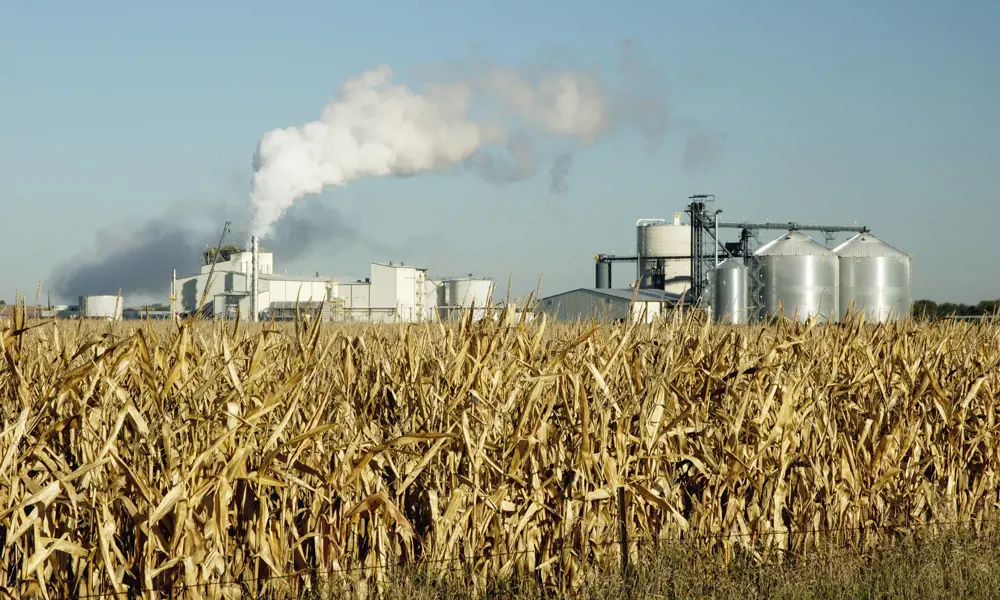
Biofuels’ journey to the mainstream
Biofuels for transport are not new. Henry Ford’s first vehicles of the 1900s were constructed to run on both ethanol (distilled from hemp or potato) and petroleum. He saw ethanol as the ‘fuel of the future’. However, the cheap and plentiful supply of gasoline saw fossil fuel win the battle to power motor vehicles and it was not until the oil supply crisis of the 1970s that ethanol would become a serious transport fuel contender again.
At that time, many countries showed interest in producing biofuels but only Brazil produced it in large quantities using sugar cane, which grows easily in the country. By the 1990s, when the sharp rise in crude oil prices and shortages led to concerns over energy security, the US took to producing ethanol from corn to such an extent that it now leads the world in ethanol production. The country manufactures over 60 billion litres of ethanol a year, which it blends with gasoline at a rate of 10% for the domestic market.
In the past decade, the interest in biofuels has increased again, with the development of government policies on climate change mitigation and strategies to reduce greenhouse gas emissions from the transport sector. More than 60 countries have now launched significant biofuel programmes and, consequently, biofuels now account for 4% of global transportation fuels.
In recent years, growth stalled in the UK as various controversies raged over the sustainability of biofuel production and use – for example, whether land and water used for growing biofuel feedstocks were interfering with resources for producing food. Now, with stricter definitions, better understanding and more controls over how and what feedstocks are used, the UK government is aiming to achieve the targets of the 2009 EU Renewable Energy Directive (RED): a minimum target of a 10% share of renewable energy in transport by 2020 and use of newer, non-food feedstocks.
In April 2018, the government’s revised Renewable Transport Fuel Obligation set out aims to meet these levels. The target amount of biofuels to be added to regular pump fuel immediately rose to 7.25%, increasing to 9.75% by 2020 and 12.4% by 2032. Transport fuel suppliers that meet this sustainability criteria are awarded Renewable Transport Fuel Certificates.
Environmental considerations of Biofuel production
💧 The complex relationship between biofuels and biodiversity
There are strict environmental criteria in place regarding what can be considered a renewable fuel and biofuels producers have developed several voluntary sustainability certification schemes for use within their supply chains. Out of these schemes, the European Commission recognises 19 that meet the requirements of the Renewable Energy Directive so can be used to certify biofuels. The ISO 13065 standard on Sustainability Criteria for Bioenergy provides an evaluation framework for environmental, social and economic sustainability of different bioenergy products and supply chains, which includes biofuels. It specifies a set of principles, criteria and indicators that should be used in sustainability assessments. However, the standard only deals with direct impacts – those that are “under the direct control of the economic operator and caused by the process being assessed” – meaning that indirect impacts are outside the scope of the standard.
Therefore, the relationship between biofuels and biodiversity can sometimes be complex. Biofuel production can potentially threaten local biodiversity through areas such as habitat loss and degradation, intensive cultivation, excessive use of agricultural chemicals and other forms of pollution, overexploitation and unsustainable use of land. The impact of their production on biodiversity depends on the feedstock used and scale of production, management practices and land-use change (when human activities transform the natural environment).
The reduction of greenhouse gas emissions is the main environmental driver for the use of biofuels. Lifecycle assessment of feedstocks used for bioenergy is a way to measure their carbon footprints in comparison to those of fossil fuels. Studies have found that while biofuels are cleaner to burn, the process to produce the fuel, especially with first-generation crops, can have hefty carbon emissions. For example, if the market demand for biofuels drives land-use change, such as deforestation of tropical rainforest, the carbon footprint of bioethanol from sugar cane can be much higher than that of petrol.
Water use is another important consideration when trying to evaluate the environmental effects of producing biofuels. Some biofuel crops require large amounts of water to irrigate them. Similarly, manufacturers sometimes need large amounts of water, even if second generation (produced from waste) feedstocks are being used. This can put a strain on local and regional water resources.
For so-called first-generation feedstocks (food crops), the effect on food prices is another consideration. As the demand for food crops, such as corn, grows for biofuel production then prices for staple food crops could rise, leading to food shortages.
What is biofuel?
Biofuel is derived from biomass, biological matter that has some form of carbon in, which is passed through a chemical process to make it sufficiently energy dense to make a fuel. Unlike fossil fuels, which are produced over millions of years, biofuel is produced relatively quickly. Biofuels can be used in place of regular fuel in cars, trucks and other vehicles and, as a renewable fuel, it can offer significant environmental benefits including reducing emissions of greenhouse gases.
Almost any biological material could be turned into some sort of fuel with varying degrees of manufacturing efficiency and energy input/output. The science says that it is possible, but it is the economics behind the process and the ethics, such as whether there is an alternative need for the feedstock, that influences policymakers and determines take-up.
However, major barriers to the wider adoption of biofuel are the production costs and the impact of diverting food resources to fuel use. It is therefore increasingly important to produce biofuels from alternative oil sources unsuitable for human consumption and there are many sources of low cost waste oils: from restaurant waste to rendered animal fats. It is estimated that one million tonnes per year of waste oils are collected in Europe alone. Disposing of these waste oils can be hugely problematic as they can contaminate water in the environment, but one excellent way of disposing of them is in biofuel production.
Liquid Biofuel Classification
🧪 The products and production methods of different generation biofuels
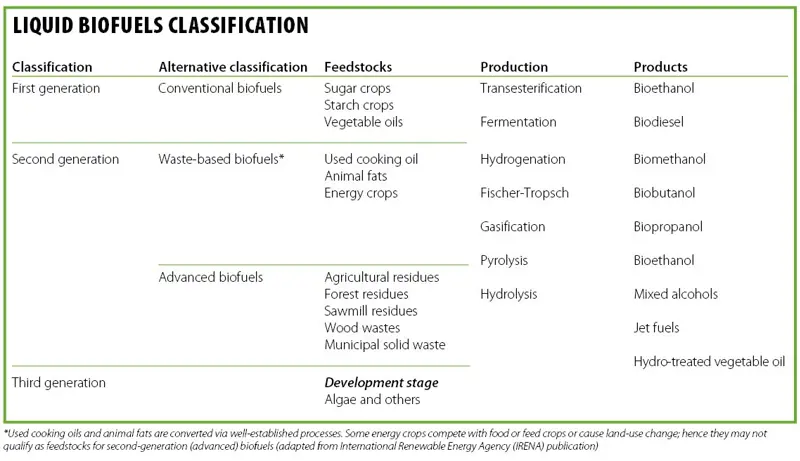
*Used cooking oils and animal fats are converted via well-established processes. Some energy crops compete with food or feed crops or cause land-use change; hence they may not qualify as feedstocks for second-generation (advanced) biofuels (adapted from International Renewable Energy Agency (IRENA) publication)
Types of Biofuel
The two main types of liquid biofuel used for road transport in the UK are bioethanol, which accounted for 49% of renewable fuel, and biodiesel, which made up 47% of the total 1,540 million litres produced in 2016/17. Fuels produced from food-crop feedstocks are classified as ‘first generation’ biofuels. Those that replace food-crop feedstocks with feedstocks from various waste sources, thereby avoiding competition with food, are classified as second generation; for example, to qualify as a second-generation feedstock, the source must not be suitable for human or animal consumption [see Liquid biofuels classification].
The Royal Academy of Engineering’s 2017 report, Sustainability of liquid biofuels, made strong recommendations that incentives should be given to farmers to increase production of energy crops
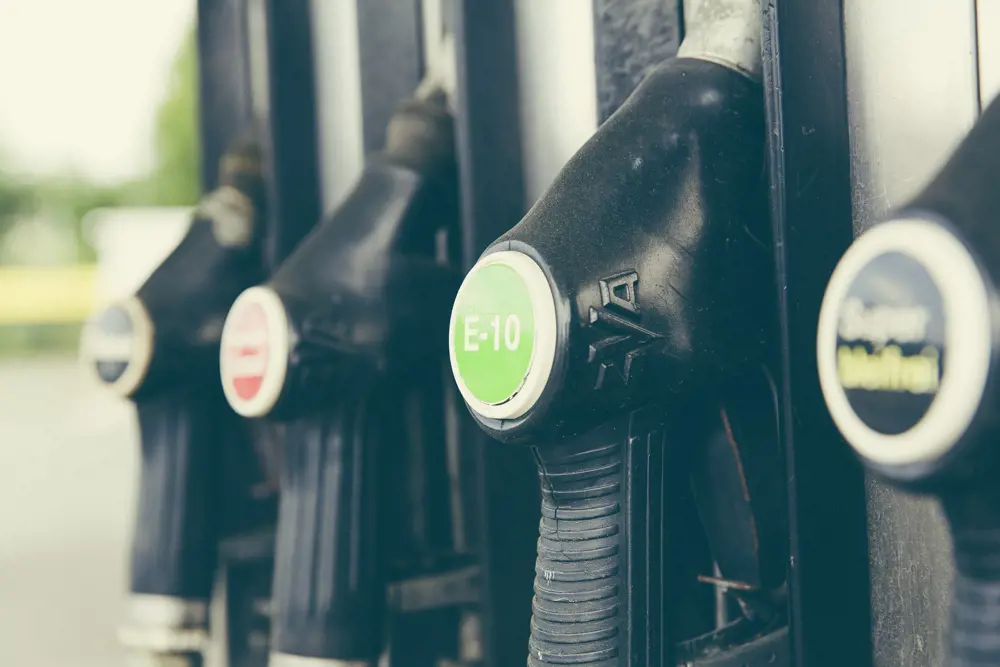
E10 is a biofuel made up of 10% bioethanol and 90% regular unleaded, said to reduce greenhouse gas emissions. It is currently sold across Germany, France and Finland, and the UK government is considering rolling it out across the UK. However, many cars are unable to use the biofuel and research by What Car? has showed that it is potentially less efficient, meaning drivers would have to fill up their engines more regularly
First-generation bioethanol is a biofuel produced through the fermentation of carbohydrate or sugar crops such as wheat, sugar cane and sugar beet. Second-generation bioethanol is being produced in the US from cellulosic biomass or crop residues. It has about two-thirds of the energy per mass of petroleum, which means that when there is 10% ethanol/petrol blend it will have 97% as much energy as petrol. Ethanol burns cleaner than petrol and so produces less carbon (soot) and carbon monoxide.
Biodiesel is made through the esterification of fats, a chemical reaction in which two reactants, typically an alcohol and an acid, form a chemical compound. The common first-generation feedstocks for this include edible oils such as rapeseed and soybean oil, while second-generation fuels are being produced from waste products such as used cooking oil and tallow. Biodiesel is only slightly less energy dense than regular diesel and burns cleaner, producing fewer particulates and sulphur compounds, so extending the life of catalytic converters.
In order to incentivise their use over first-generation biofuels, some EU member states ‘double count’ second-generation biofuels towards obligations to blend low-carbon fuels into the fuel pool. Double-counted biofuels are issued double the number of Renewable Transport Fuel Certificates. For example, in the UK, short rotation coppice is grown as double-counted feedstock for biodiesel.
The Royal Academy of Engineering’s 2017 report, Sustainability of liquid biofuels, made strong recommendations that incentives should be given to farmers to increase production of energy crops such as miscanthus on marginal land. It also pointed to the 16 million tonnes of waste that could be used for biofuels every year – a third being green waste and a quarter agricultural straw. It also highlighted the use of unavoidable waste such as cooking oil, forest and sawmill residues, and fatbergs from sewers.
From fatberg to fuel
🗑️ An innovative way of using difficult-to-convert waste
Argent Energy is a big player in processing used oil for biofuels and has gained a reputation for developing innovative ways to exploit difficult-to-convert waste such as old soup stock and stale mayonnaise. The company’s two large plants in Motherwell and Stanlow have a capacity to produce 145 million litres of biodiesel a year. In 2005, Argent pioneered the use of tallow – rendered mutton, beef or other bovine fat – for commercial scale biodiesel production. Its patented pre-treatment process both filters and sterilises the tallow so that it can be used as a raw material for biodiesel.
Argent then started to ‘harvest’ sewage sludge taken from the water-treatment process. It solved the challenge of converting low-grade sewer fat into a useable fuel. This waste now constitutes 10% of the company’s biodiesel manufacturing. In 2017, the company hit the headlines when it invited Thames Water to send it some of the 250-metre long, 130 tonne Whitechapel fatberg. The company’s chemical engineers worked on the fatberg at a pre-treatment plant at Ellesmere Port and converted 30% to 40% of what was sent through to biodiesel feedstock.

A small section of the infamous Whitechapel fatberg while it was still in the London sewer system © Thames Water
Use of biofuels in the air and sea
The government’s Renewable Transport Fuel Obligation established percentage targets for the use of biofuels within regular fuel at the pump, as well as setting up new ‘sub-targets’ that encourage innovation of ‘development fuels’ and investment in the aviation sector.
The target for development fuels will rise from 0.1% in 2019 to 2.8% in 2032, equating to production levels of 500 million litres per annum by 2030. Today, there are 30 gas-filling stations in the UK and two dedicated to solely dispensing biomethane (from food waste) in Leyland and Crewe.
The target for development fuels will rise from 0.1% in 2019 to 2.8% in 2032, equating to production levels of 500 million litres per annum by 2030

A Lufthansa aircraft is refuelled at Oslo airport © Tom Parsons
The new law introduces hydrogen, of non-biological origin, as a renewable fuel, so water being electrolysed would count. It also mentions gasification, producing a mix of carbon monoxide and hydrogen, from which methane can be made. That gets an extra incentive as it is defined as a development fuel, rather than producing the same result through anaerobic digestion (a series of biological processes in which microorganisms break down biodegradable material without oxygen present), which no longer gets incentivised through certification.
The government has targeted the aviation sector because it is the second largest consumer of energy in the transport industry. It also accounts for at least 2% of worldwide CO₂ emissions. Internationally, the aviation industry has set ambitious goals for reducing its emissions, aiming for no net increase from 2020 onwards and a 50% reduction by 2050 compared to 2005.
Until recently, the major hurdle had been the difficulty of producing high purity, chemically stable renewable fuel that did not freeze at 30,000 feet. Aviation fuel has special requirements, including a need for high energy density, and biofuels such as biomethanol and bioethanol have relatively low energy densities – aeroplanes using such fuel would have a limited range or would need to carry an enormous amount of fuel.
Aviation fuel serves as more than just combustion in an aircraft; it also functions as a lubricant, cooling fluid and hydraulic fluid. Fuel producers have used and trialled various feedstocks including municipal solid waste, cellulosic waste, used cooking oil, crops such as camelina (false flax) and jatropha (a semi-evergeen shrub also known as physic nut), and even waste gases from industrial processes such as steel manufacture.
In 2008, Virgin Atlantic successfully flight tested a Boeing 747 using a 20% biofuel mix, derived from babassu palm oil and coconut. Since then, thousands of commercial flights have operated using biofuel that is blended with Jet A fuel in the US and Jet A-1 fuel, which is based on unleaded kerosene, elsewhere. ‘Drop-in’ fuel – a synthetic fuel substitute – has similar qualities to standard jet fuel, which means that engines, fuel systems and fuel distribution networks do not need to be adapted.
One of the biggest obstacles is the economies of scale that need to be achieved, entailing scaled-up refining and processing capacity
Using Fischer-Tropsch to convert waste
🛢️ The close collaboration making Fischer-Tropsch applications possible on both small and large scales
Developed in 1925, the Fischer-Tropsch (FT) process involves a series of chemical reactions that convert a mixture of carbon monoxide gas and hydrogen gas (known as synthetic gas or syngas) into long chain hydrocarbons. In 1996, Johnson Matthey (JM) first began collaborating with BP to develop a technology that used the FT process to create diesel or jet fuels from renewable feedstocks.
To demonstrate the potential of the FT process for creating synthetic fuels, JM and BP built the Nikiski Demonstration plant in Alaska, the largest FT facility ever built in the US. The plant, which was decommissioned in 2009, featured the first generation of FT-processing technologies. It combined three core processing steps: syngas generation by novel compact steam reforming of natural gas; a cobalt-catalysed, fixed-bed tubular reactor to convert the syngas into the hydrocarbon chains; and mild hydrocracking facilities that produce synthetic crude fuels. At its peak, the Nikiski plant could produce 300 barrels of synthetic crude product per day.
JM and BP’s collaboration continued to make significant improvements to the reactor system, including the recent development of the catalyst carrier technology. The new reactor uses smaller cobalt particles to improve productivity and selectivity. The catalyst carrier reactor was redesigned to be more compact, reducing the number of tubes required by around 95% and total capital expenditure by 50% when compared to conventional tubular technology.
This close collaboration makes FT applications possible at both small and large scales, with the capability to produce as much as 6,000 barrels per day from a single reactor. The success of the catalyst carrier technology relied on the combined expertise of both JM and BP. The BP team improved the catalyst particles by optimising their chemical and physical properties for the conditions of the carrier, while the JM team leveraged expertise in engineering science to improve the reactor concept. Their joint design has been validated by over 16,000 hours of operations at JM’s research and development facility in Stockton-on-Tees.
Fulcrum BioEnergy is now using this technology at its biofuels plant, located outside of Reno, Nevada. It will be the first US plant to produce a renewable fuel from municipal solid waste or household rubbish, first sorting the waste to recover recyclables and remove material not suitable for processing, before gasifying the waste to produce a syngas. Several of JM’s other catalysts and absorbents will then be used to help purify the syngas before it passes to the FT reactor to produce synthetic fuels.
When the plant begins operation in early 2020, Fulcrum BioEnergy is expected to convert approximately 175,000 tonnes of household waste into approximately 11 million gallons of fuel each year: equivalent to the fuel that is needed for more than 180 return flights between London and New York.
Since its first commercial use, the technological progress of aviation biofuel has been substantial, although take-up has been relatively modest. In November 2017, a milestone was reached with 100,000 commercial flights undertaken using fuel blended with biofuel. One of the biggest obstacles is the economies of scale that need to be achieved, entailing scaled-up refining and processing capacity. To help make this happen, the low carbon transportation fuels company Fulcrum BioEnergy is building a waste-to-jet biofuel plant in the US [see Using Fischer-Tropsch to convert waste].
The marine sector is another important user of fossil fuel, consuming over 330 million tonnes every year and contributing to an estimated 2% to 3% of global CO₂ emissions. Compared to road transport and aviation, shipping uses much less refined fuel types. Marine fuels are primarily produced from crude oil and mainly use heavy fuel oil and marine diesel oil. Emission control areas on North American and European coastlines enforce strict limits on sulphur oxides and nitrogen dioxide, which means that low-polluting fuel alternatives have been developed. Now there is a focus on biofuels that will work in the marine sector too.
Although there is no mention of marine fuels in the Renewable Transport Fuel Obligation, the industry itself has looked at possible biofuel take-up. Currently, the higher price of biofuels and the lack of sufficient logistical support at ports for fuels that are not compatible with diesel-type fuels are proving obstacles to implementation. It may be that other alternatives to liquid fuels such as hydrogen, electric and natural gas will be the preferred option for reducing greenhouse gases for ship owners worldwide.
Biofuels in the UK
🌾 UK Biofuels, feedstock and greenhouse gas saving facts
- Liquid biofuels account for 4% of total road and non-road mobile machinery fuel (equivalent to 525 million litres).
- 172 million litres of this fuel met sustainability requirements – the government has awarded 320 million Renewable Transport Fuel Certificates to transport fuel suppliers that have met these specifications.
- 86% of the fuels that met the criteria were made from a waste or residue feedstock (second generation).
- UK feedstock accounted for 26% of the biofuel.
- The most widely reported source for biodiesel (by feedstock and country of origin) was used cooking oil from the UK.
- The most widely reported source for bioethanol (by feedstock and country of origin) was starch slurry (low grade) from France.
- Renewable fuels achieved an aggregate greenhouse gas saving of 83%, compared to fossil fuels in this period.
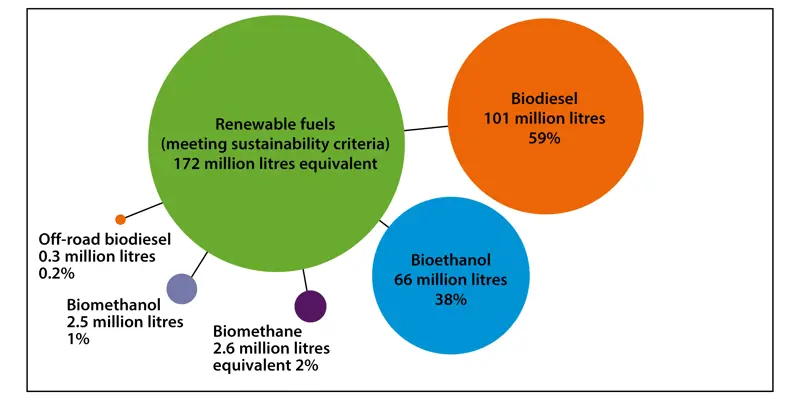
Volume of renewable fuels used in the UK between 15 April 2018 and 31 December 2018. All figures were taken from the Department for Transport’s Renewable TransportFuel Obligation statistics: period 11 (2018), report 1, which covered the period from 15 April 2018 to 31 December 2018.
The road ahead
The future take-up of biofuels in the UK depends on many variables. It could be that sales of electric cars will cut the need for biofuels, that hydrogen for trains becomes a viable possibility or that biogas for lorries will be the favoured option. The pathways to decarbonisation are many and varied with unknown factors still able to trip up the best-meaning policymaking intentions.
In terms of government direction, there is now a focus on ensuring that the UK’s energy mix is environmentally and economically sustainable. Feedstock supply chains are now being scrutinised and certified for their sustainability credentials and bioethanol has reached similar price levels to fossil fuel. Renewable diesel is more expensive than its fossil equivalent but because it is blended at only 7% with standard diesel, the price difference for the consumer is small.
The coming decades will see further innovations in biofuel development. A possible win-win result would be an increase in the nation’s fuel security while at the same time reduced waste to landfill and lowered greenhouse gas emissions.
***
The author would like to thank contributors to this article who include: Gaynor Hartnell, Head of Transport Fuels and Landfill Gas, Renewable Energy Association; Dr Andrew Chilvers, Senior Policy Advisor, Royal Academy of Engineering; Tom Parsons, Commercial Development Manager – Biojet, Air BP ; and Andrew Coe, Technology Manager – Fischer-Tropsch, and Michael Winter, Technology Manager, both from Johnson Matthey.
To read the report, Sustainability of liquid biofuels, please visit www.raeng.org.uk/biofuels
This article has been adapted from "Biofuel's journey to the mainstream", which originally appeared in the print edition of Ingenia 78 (March 2019).
Contributors
Dominic Joyeux
Author
Keep up-to-date with Ingenia for free
SubscribeRelated content
Chemical

Q&A: Olivia Sweeney
Olivia Sweeney sources aroma chemicals to create fragrances at cosmetics company Lush. She is working on finding new, more sustainable sources of fragrance ingredients, with an interest in the research and development of chemical production from waste streams.

Compostable plastics
Compostable plastics can be turned – alongside food and other organic waste – into compost. But how environmentally friendly are they really?

Q&A: Michelle Watiki
From placements at Xerox and Rolls Royce, to becoming a board member for the Association for Black and Ethnic Minority Engineers, chemical engineering graduate Michelle Watiki hopes to apply her knowledge to sustainability and net zero, as well as helping future engineering students.
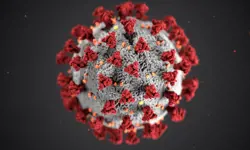
Wastewater epidemiology
Sampling and testing of wastewater is helping governments across the world to track COVID-19 infections on a large scale.
Other content from Ingenia
Quick read

- Environment & sustainability
- Opinion
A young engineer’s perspective on the good, the bad and the ugly of COP27

- Environment & sustainability
- Issue 95
How do we pay for net zero technologies?
Quick read

- Transport
- Mechanical
- How I got here
Electrifying trains and STEMAZING outreach

- Civil & structural
- Environment & sustainability
- Issue 95